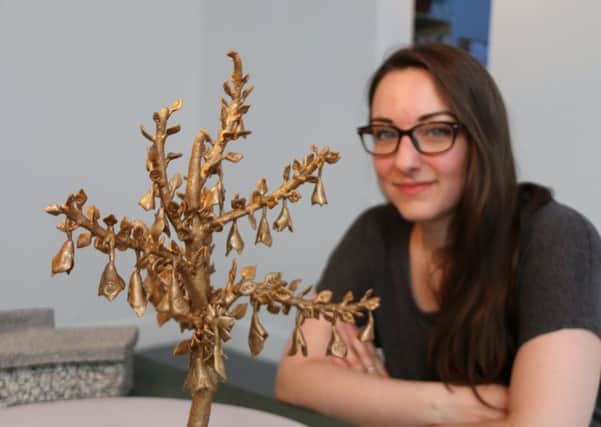Steve Cardownie: Fitting memorial to those who won't fight


The memorial will take the form of a two-metre bronze handkerchief tree, alongside which will be a three-metre curved granite gabion seat.
The concept is to create a reflection space open to everyone, that encourages discussions at all levels, where visitors will feel invited to contemplate the memorial’s meaning in a welcome and non-confrontational way.
Advertisement
Hide AdAdvertisement
Hide AdIt is called the handkerchief tree as “the tree’s white bracts flutter like thousands of white handkerchiefs in a gentle breeze” and this is deemed to be reminiscent of the No Conscription Assembly rally of 1916, where audience members waved white handkerchiefs as a show of silent support for objectors and, in so doing, not inflame an angry mob outside the meeting venue by applauding. The tree is also known as the dove tree or peace tree and one grows in the Royal Botanic Gardens.
The Military Service Act of 1916 introduced compulsory conscription in Great Britain for the first time in modern history. Although not specifically mentioned in the Act, the Government recognised those whose “objection genuinely rests on religious or moral convictions”. Despite this only a small number were exempted from service, with most obliged to serve in non-combatant roles.
During the First World War there were 16,000 conscientious objectors yet only 400 gained exemption and once drafted into the Army, men who disobeyed orders faced a court martial. Anyone fleeing the front could be shot. Many believed that it was a capitalist war and that young men were being sacrificed on the altar of greed and as such wanted no part of it.
Although attitudes had changed somewhat by the time that the Second World War broke out, conscientious objectors still faced massive obstacles.
Advertisement
Hide AdAdvertisement
Hide AdIn a speech in the House of Commons on April 27, 1939 the then Prime Minister Neville Chamberlain said: “We all recognise that there are people who have perfectly genuine and deep-seated scruples on the subject of military service. Where these scruples are conscientiously held we desire that they should be respected, and that there should be no persecution.”
Given then that the rights of people to conscientiously object to military conflict and to refuse to take part has been recognised across the political spectrum both at home and abroad for generations, it could be argued that the sighting of a memorial within the Gardens has been a long time coming and the organisations involved in this initiative should be commended.
The design and construction of our memorial will be funded by the Conscientious Objectors Memorial Partners, which will also contribute to the ongoing maintenance. The memorial partners include the Edinburgh Peace and Justice Centre, the Workers Educational Association, Scotland and the University of Edinburgh as well as two secondary schools – Tynecastle and St Thomas of Aquin’s – with completion by August 2019.
There is no reason why this proposal will not attract unanimous support tomorrow. It should prove to be a welcome addition and provide some balance to the memorials that already exist in West Princes Street Gardens which are devoted to military conflict.